16_DM.ppt
- Количество слайдов: 26

МЕТАБОЛІЗМ ЛІКАРСЬКИХ ЗАСОБІВ (DMPK) 1
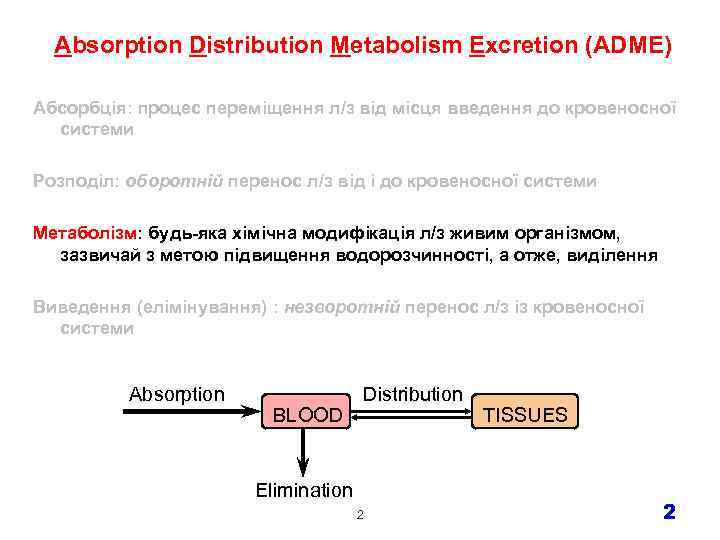
Absorption Distribution Metabolism Excretion (ADME) Абсорбція: процес переміщення л/з від місця введення до кровеносної системи Розподіл: оборотній перенос л/з від і до кровеносної системи Метаболізм: будь-яка хімічна модифікація л/з живим організмом, зазвичай з метою підвищення водорозчинності, а отже, виділення Виведення (елімінування) : незворотній перенос л/з із кровеносної системи Absorption BLOOD Distribution Elimination 2 TISSUES 2
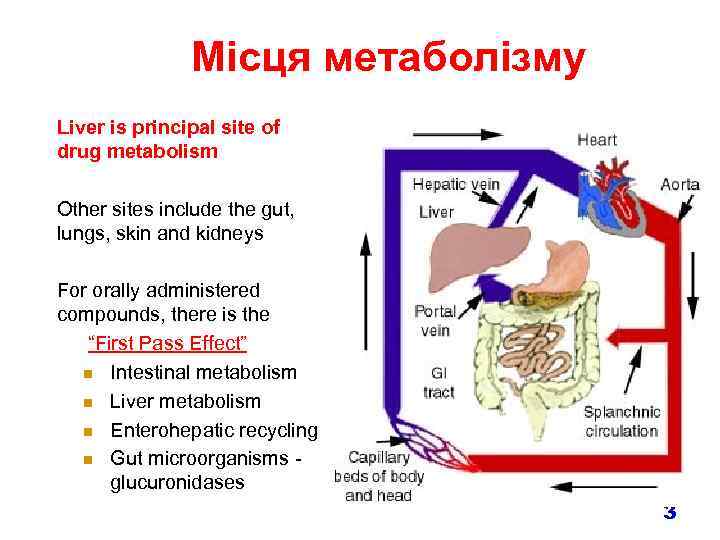
Місця метаболізму Liver is principal site of drug metabolism Other sites include the gut, lungs, skin and kidneys For orally administered compounds, there is the “First Pass Effect” n Intestinal metabolism n Liver metabolism n Enterohepatic recycling n Gut microorganisms glucuronidases 3
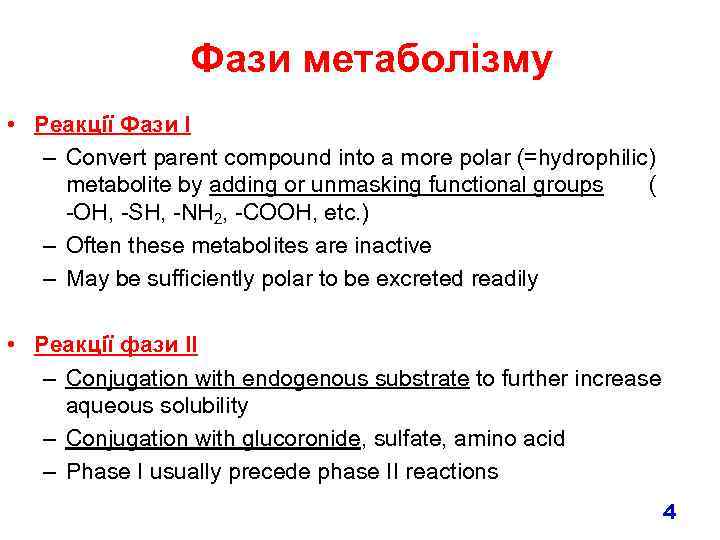
Фази метаболізму • Реакції Фази І – Convert parent compound into a more polar (=hydrophilic) metabolite by adding or unmasking functional groups ( -OH, -SH, -NH 2, -COOH, etc. ) – Often these metabolites are inactive – May be sufficiently polar to be excreted readily • Реакції фази ІІ – Conjugation with endogenous substrate to further increase aqueous solubility – Conjugation with glucoronide, sulfate, amino acid – Phase I usually precede phase II reactions 4
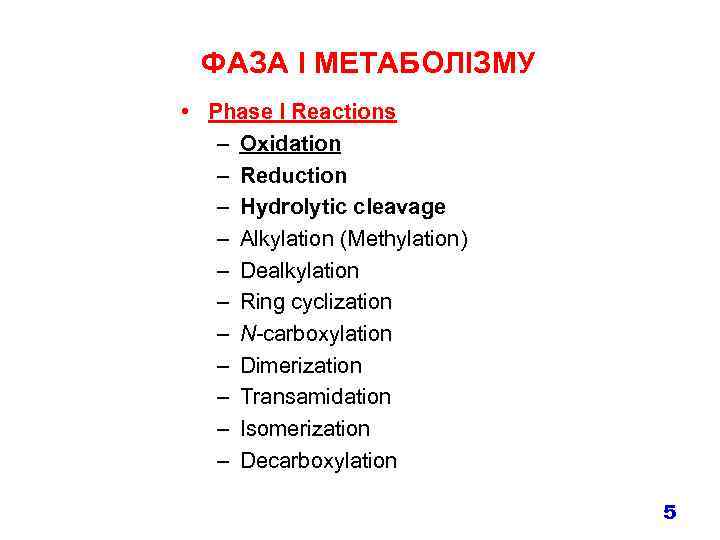
ФАЗА І МЕТАБОЛІЗМУ • Phase I Reactions – Oxidation – Reduction – Hydrolytic cleavage – Alkylation (Methylation) – Dealkylation – Ring cyclization – N-carboxylation – Dimerization – Transamidation – Isomerization – Decarboxylation 5
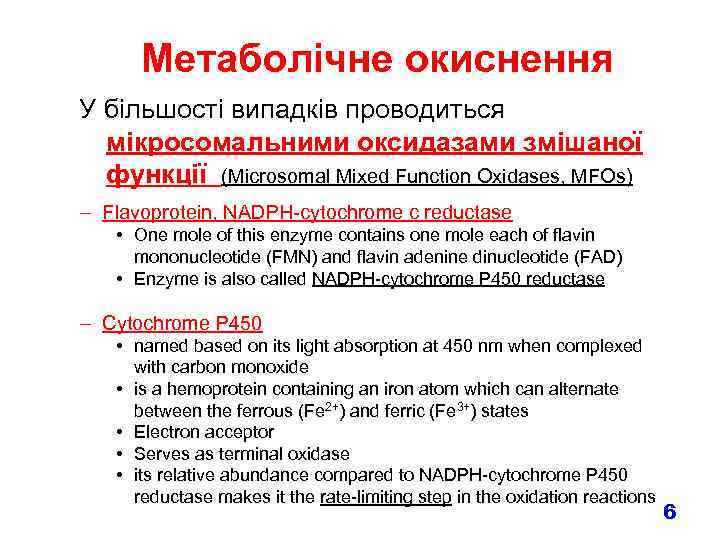
Метаболічне окиснення У більшості випадків проводиться мікросомальними оксидазами змішаної функції (Microsomal Mixed Function Oxidases, MFOs) – Flavoprotein, NADPH-cytochrome c reductase • One mole of this enzyme contains one mole each of flavin mononucleotide (FMN) and flavin adenine dinucleotide (FAD) • Enzyme is also called NADPH-cytochrome P 450 reductase – Cytochrome P 450 • named based on its light absorption at 450 nm when complexed with carbon monoxide • is a hemoprotein containing an iron atom which can alternate between the ferrous (Fe 2+) and ferric (Fe 3+) states • Electron acceptor • Serves as terminal oxidase • its relative abundance compared to NADPH-cytochrome P 450 reductase makes it the rate-limiting step in the oxidation reactions 6
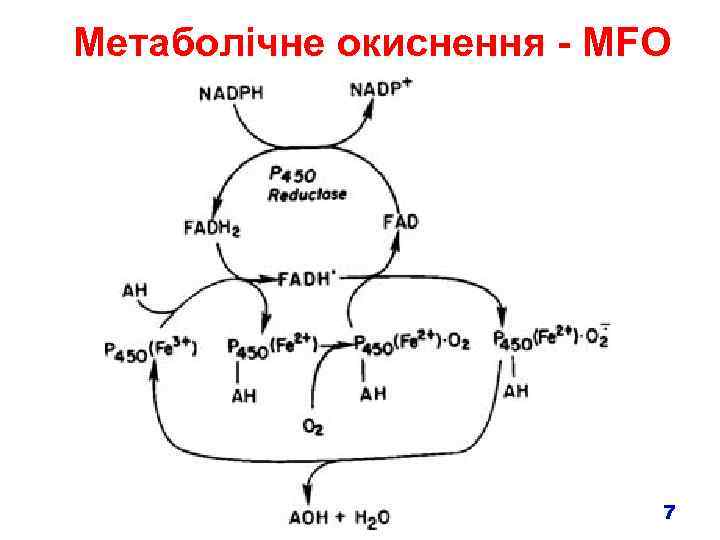
Метаболічне окиснення - MFO 7

Метаболічне окиснення - MFO Aromatic hydroxylation: Aliphatic hydroxylation: 8
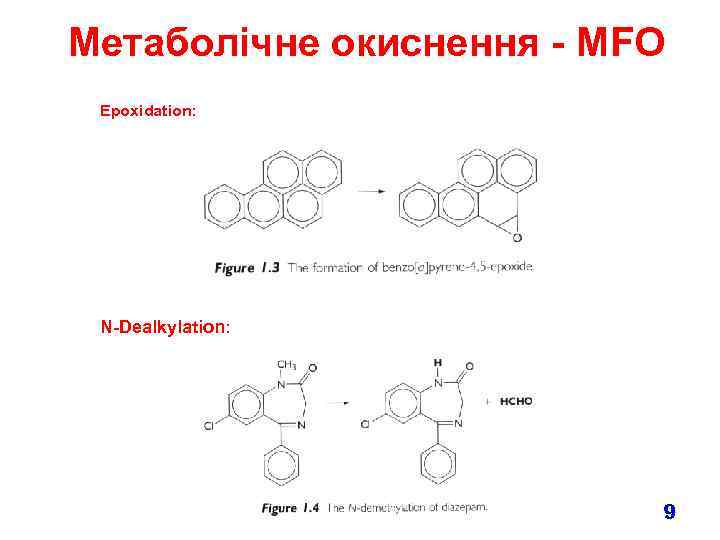
Метаболічне окиснення - MFO Epoxidation: N-Dealkylation: 9
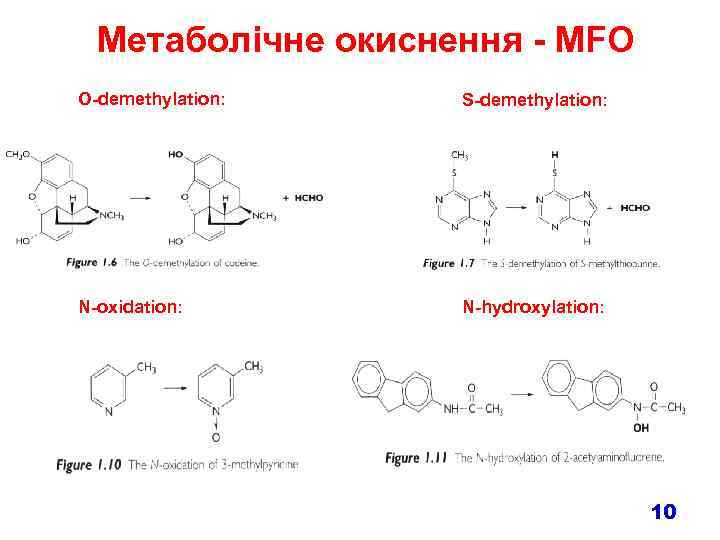
Метаболічне окиснення - MFO O-demethylation: S-demethylation: N-oxidation: N-hydroxylation: 10
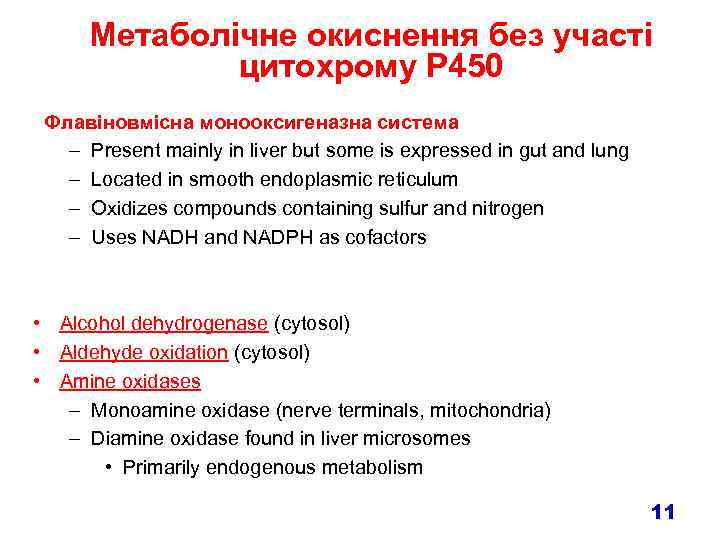
Метаболічне окиснення без участі цитохрому P 450 Флавіновмісна монооксигеназна система – Present mainly in liver but some is expressed in gut and lung – Located in smooth endoplasmic reticulum – Oxidizes compounds containing sulfur and nitrogen – Uses NADH and NADPH as cofactors • Alcohol dehydrogenase (cytosol) • Aldehyde oxidation (cytosol) • Amine oxidases – Monoamine oxidase (nerve terminals, mitochondria) – Diamine oxidase found in liver microsomes • Primarily endogenous metabolism 11
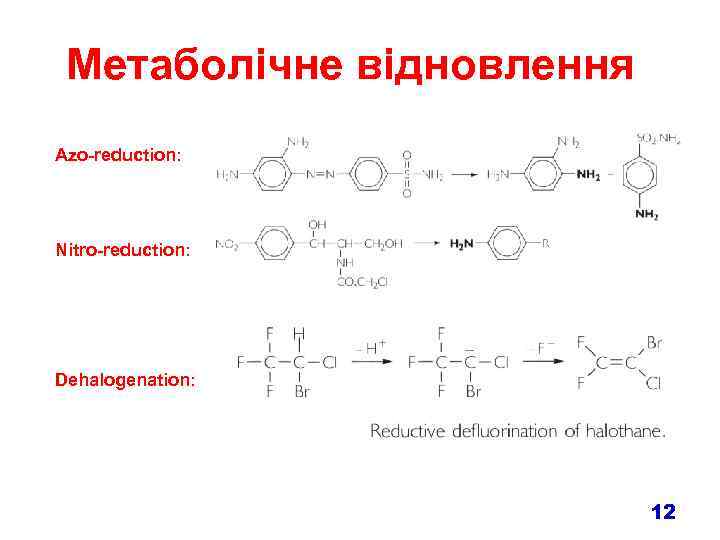
Метаболічне відновлення Azo-reduction: Nitro-reduction: Dehalogenation: 12
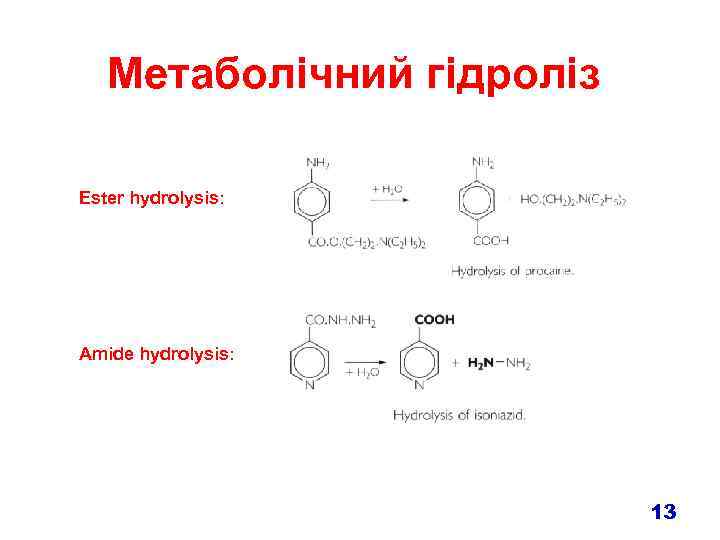
Метаболічний гідроліз Ester hydrolysis: Amide hydrolysis: 13
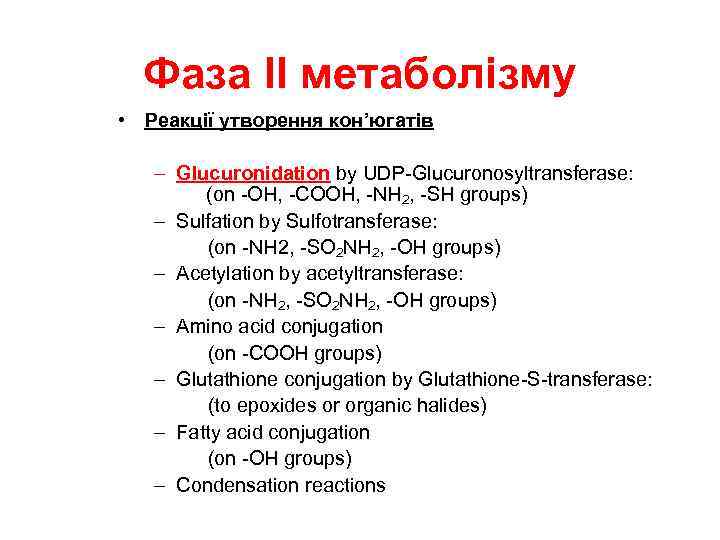
Фаза ІІ метаболізму • Реакції утворення кон’югатів – Glucuronidation by UDP-Glucuronosyltransferase: (on -OH, -COOH, -NH 2, -SH groups) – Sulfation by Sulfotransferase: (on -NH 2, -SO 2 NH 2, -OH groups) – Acetylation by acetyltransferase: (on -NH 2, -SO 2 NH 2, -OH groups) – Amino acid conjugation (on -COOH groups) – Glutathione conjugation by Glutathione-S-transferase: (to epoxides or organic halides) – Fatty acid conjugation (on -OH groups) – Condensation reactions
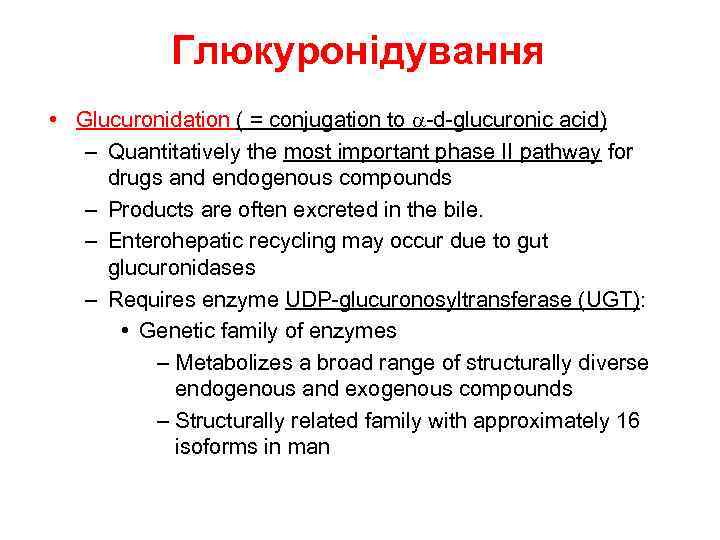
Глюкуронідування • Glucuronidation ( = conjugation to a-d-glucuronic acid) – Quantitatively the most important phase II pathway for drugs and endogenous compounds – Products are often excreted in the bile. – Enterohepatic recycling may occur due to gut glucuronidases – Requires enzyme UDP-glucuronosyltransferase (UGT): • Genetic family of enzymes – Metabolizes a broad range of structurally diverse endogenous and exogenous compounds – Structurally related family with approximately 16 isoforms in man
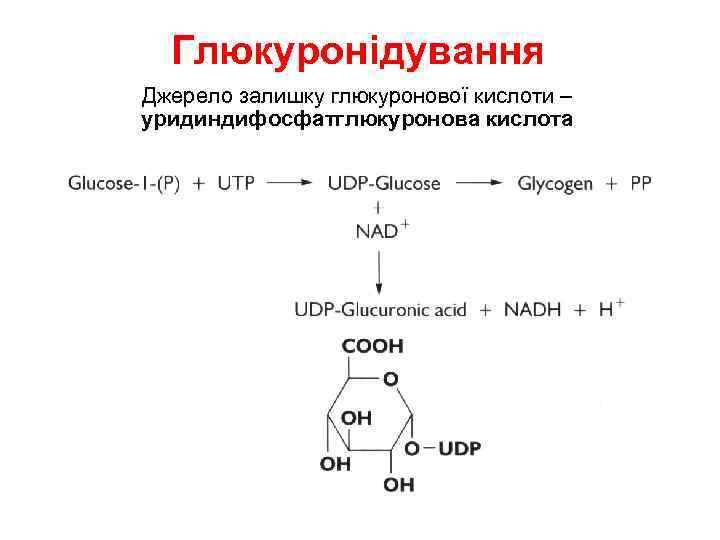
Глюкуронідування Джерело залишку глюкуронової кислоти – уридиндифосфатглюкуронова кислота
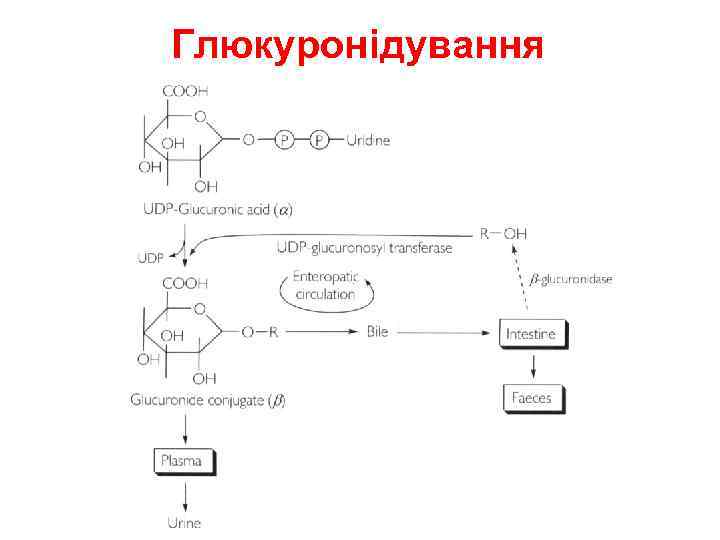
Глюкуронідування
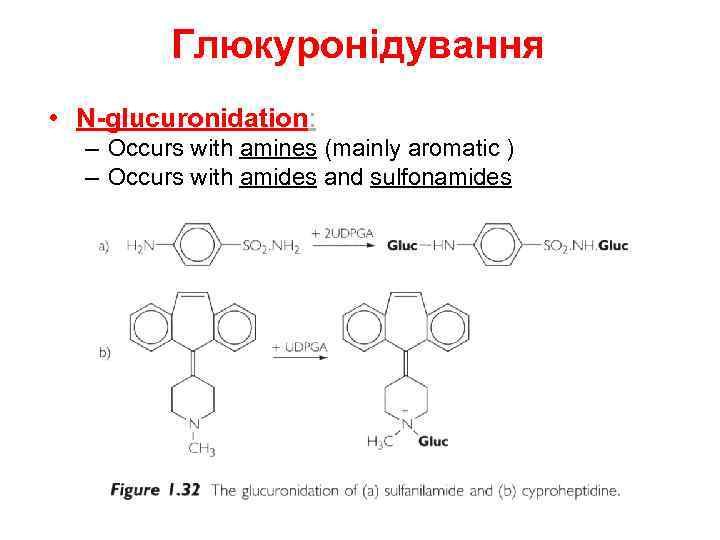
Глюкуронідування • N-glucuronidation: – Occurs with amines (mainly aromatic ) – Occurs with amides and sulfonamides
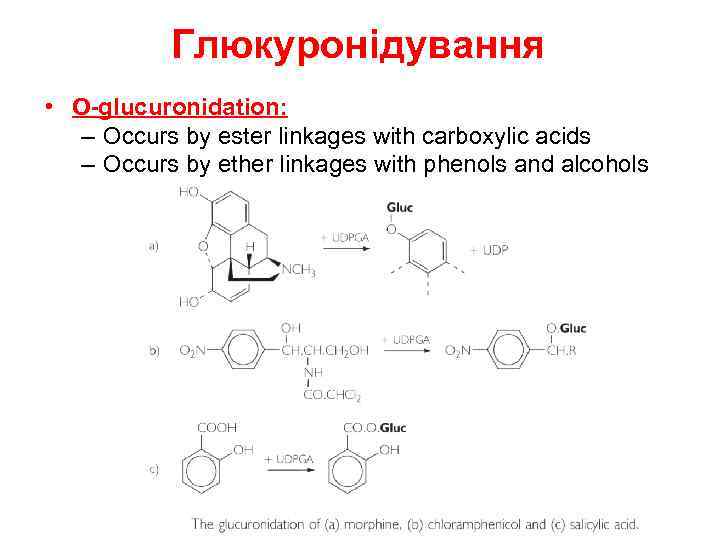
Глюкуронідування • O-glucuronidation: – Occurs by ester linkages with carboxylic acids – Occurs by ether linkages with phenols and alcohols
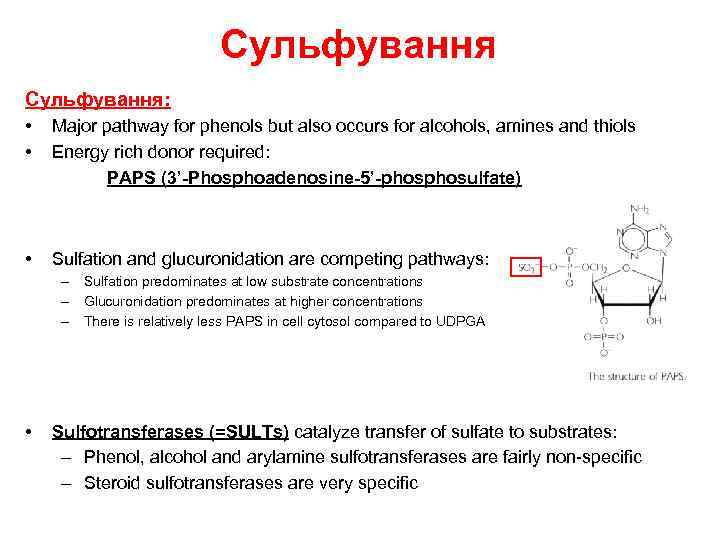
Сульфування: • • Major pathway for phenols but also occurs for alcohols, amines and thiols Energy rich donor required: PAPS (3’-Phosphoadenosine-5’-phosulfate) • Sulfation and glucuronidation are competing pathways: – Sulfation predominates at low substrate concentrations – Glucuronidation predominates at higher concentrations – There is relatively less PAPS in cell cytosol compared to UDPGA • Sulfotransferases (=SULTs) catalyze transfer of sulfate to substrates: – Phenol, alcohol and arylamine sulfotransferases are fairly non-specific – Steroid sulfotransferases are very specific
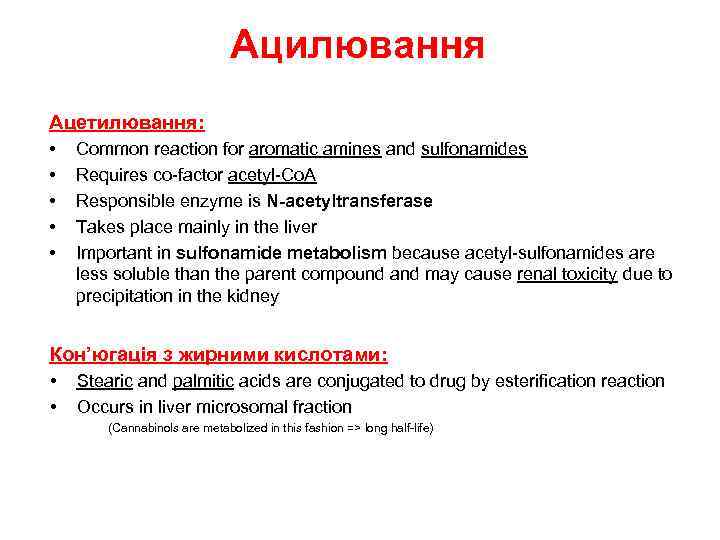
Ацилювання Ацетилювання: • • • Common reaction for aromatic amines and sulfonamides Requires co-factor acetyl-Co. A Responsible enzyme is N-acetyltransferase Takes place mainly in the liver Important in sulfonamide metabolism because acetyl-sulfonamides are less soluble than the parent compound and may cause renal toxicity due to precipitation in the kidney Кон’югація з жирними кислотами: • • Stearic and palmitic acids are conjugated to drug by esterification reaction Occurs in liver microsomal fraction (Cannabinols are metabolized in this fashion => long half-life)
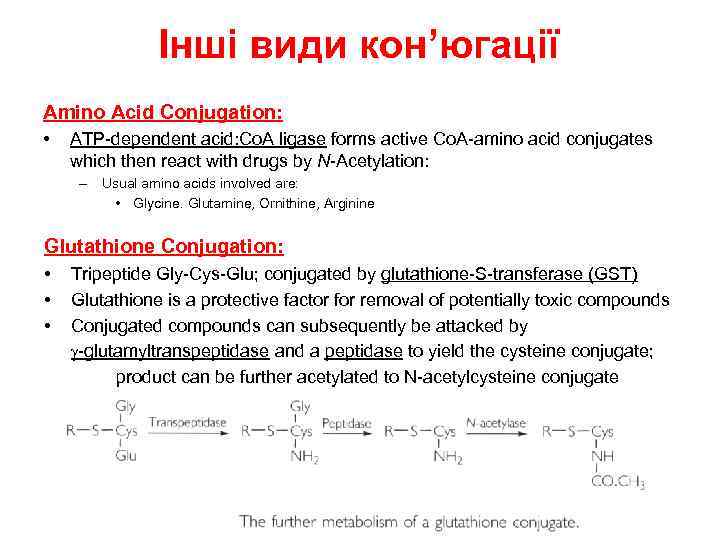
Інші види кон’югації Amino Acid Conjugation: • ATP-dependent acid: Co. A ligase forms active Co. A-amino acid conjugates which then react with drugs by N-Acetylation: – Usual amino acids involved are: • Glycine. Glutamine, Ornithine, Arginine Glutathione Conjugation: • • • Tripeptide Gly-Cys-Glu; conjugated by glutathione-S-transferase (GST) Glutathione is a protective factor for removal of potentially toxic compounds Conjugated compounds can subsequently be attacked by g-glutamyltranspeptidase and a peptidase to yield the cysteine conjugate; product can be further acetylated to N-acetylcysteine conjugate
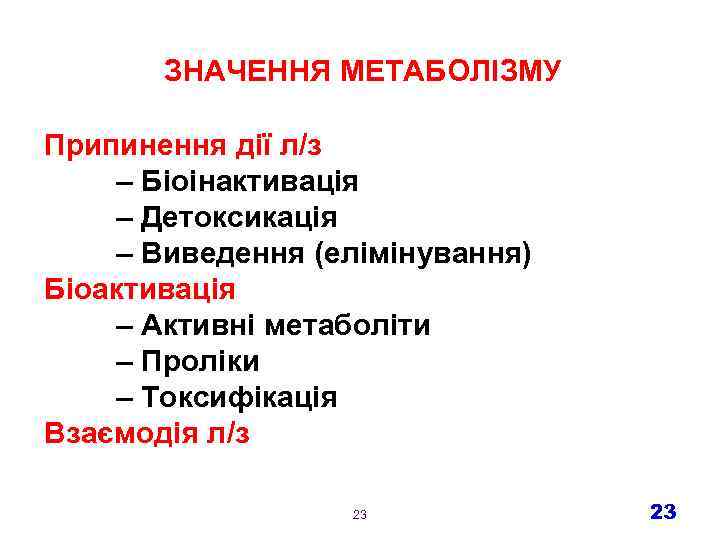
ЗНАЧЕННЯ МЕТАБОЛІЗМУ Припинення дії л/з – Біоінактивація – Детоксикація – Виведення (елімінування) Біоактивація – Активні метаболіти – Проліки – Токсифікація Взаємодія л/з 23 23
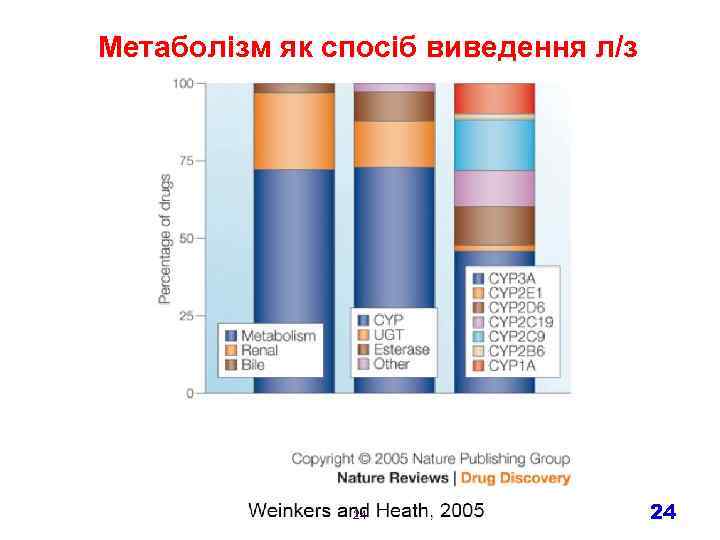
Метаболізм як спосіб виведення л/з 24 24
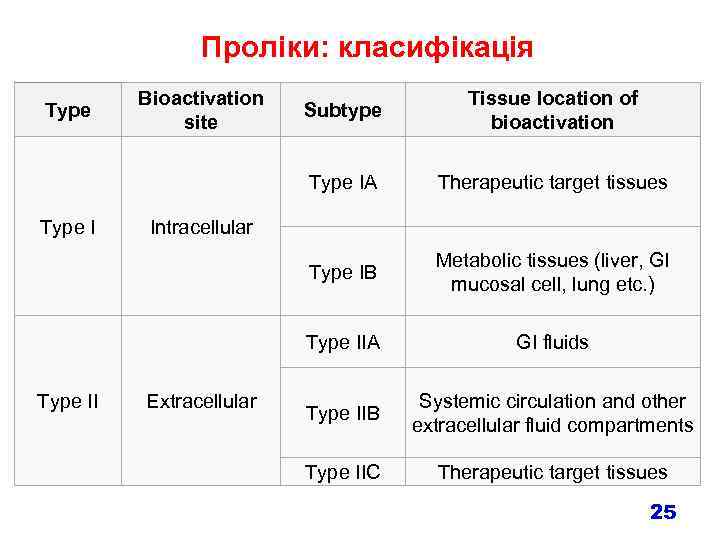
Проліки: класифікація Therapeutic target tissues Metabolic tissues (liver, GI mucosal cell, lung etc. ) Type IIA Type II Tissue location of bioactivation Type IB Type I Bioactivation site Subtype Type IA Type GI fluids Type IIB Systemic circulation and other extracellular fluid compartments Type IIC Therapeutic target tissues Intracellular Extracellular 25
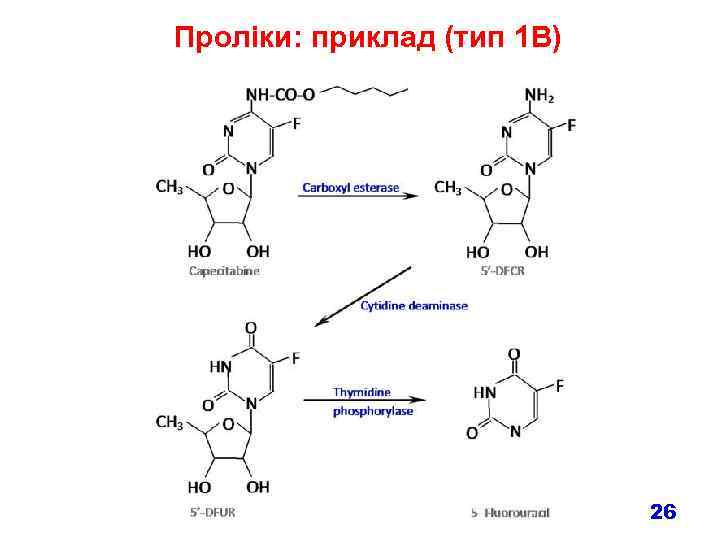
Проліки: приклад (тип 1 B) 26
16_DM.ppt